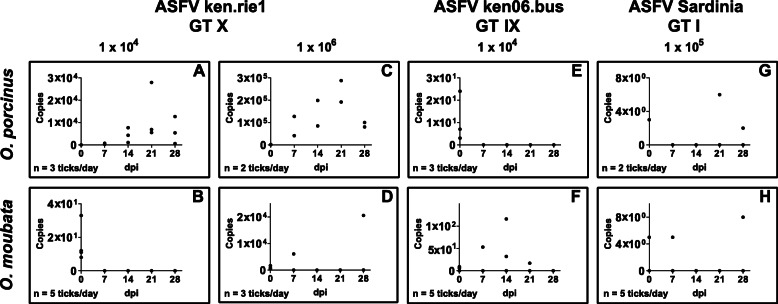Fig. 5.
RT-qPCR results of Ornithodoros spp. ticks experimentally infected with different ASFV genotypes. Shown are ASFV-P72 transcript-specific copy numbers of third nymphal stage ticks fed with defibrinated pig blood containing either 1 × 104 HAU/ml or 1 × 106 HAU/ml ASFV ken.rie1 (GT X) (a–d), 1 × 105 HAU/ml ASFV Ken06.bus (GT IX) (e, f) or 1 × 104 HAU/ml ASFV Sardinia (GT I) (g, h). Due to the limited number of field ticks available and ticks feeding under artificial conditions, fifteen ticks were collected in each of three experiments (three per time point) (a, d, e), ten in two experiments (two per time point) (c, g) and twenty-five individuals in each of three experiments (five per time point) (b, f, h) (Additional file 10: Table S8). All ticks were stored at − 80 °C prior to individual RNA extraction and RT-qPCR analysis

